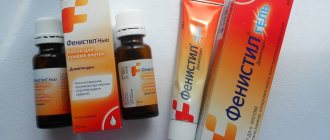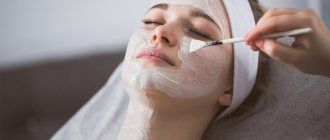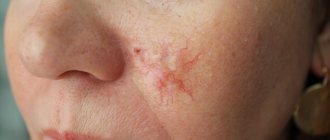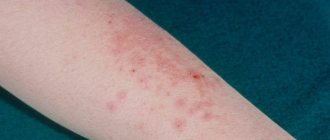Otofag gel with bacteriophages for hygiene of the skin of the ears, 50 ml
Manufacturer
Microworld NPC, Russia
Briefly about the product
Dietary supplement Not a medicine
Compound
Active substance:
- sterile suspension of phage particles in physiological solution;
Excipients:
- purified water,
- carbopol,
- calendula extract.
Indications
- Hygiene of the ears in healthy people, including during unfavorable epidemiological conditions, when changing climatic zones, during harmful environmental influences and other risks of contracting bacterial infections.
- Prevention of bacterial inflammatory diseases of the ear in the presence of risk factors, including diabetes, cancer (especially during radiation and chemotherapy), reduced local and general immunity, fungal and viral infections of the ENT organs, autoimmune and other systemic diseases.
- Prevention of bacterial inflammatory diseases of the ear (external and otitis media) and their relapses, including diseases of the nose (sinusitis, rhinitis), throat (pharyngitis, abscesses, tonsillitis, chronic tonsillitis) and other respiratory diseases (bronchitis, epiglottitis, influenza, ARVI).
- Prevention of bacterial complications during surgical interventions and other medical procedures in the ear and other ENT organs.
- As prescribed by a doctor in other clinical situations in which it is important to ensure high antibacterial protection and the absence of side effects.
Interaction
Antibacterial agents: Otofag can be used simultaneously with antibacterial agents.
Antiseptics: Otofag can be used simultaneously with solutions of chlorhexidine digluconate 0.05% and 0.2%, hydroxymethylquinoxaline dioxide 2.0%;
Due to the inactivation of bacteriophages included in Otophag, simultaneous use of the following agents with Otophag is not recommended:
- products based on octenidine and phenoxyethanol;
- products based on polyacrylic acid salts;
- hydrogen peroxide solutions.
How to take, course of administration and dosage
- At home, Otofag is applied to the treated area directly from the bottle or with a napkin (cotton swab). Do not wet the treated area (do not wash off the gel) for 40 minutes after applying Otofag.
- When visiting a specialist, Otofag treats affected or injured areas of the ear and other ENT organs.
IMPORTANT! Otofag is safe in contact with mucous membranes and if swallowed. Do not apply Otofag into closed areas of inflammation that do not have or have limited outflow of exudate from the lesion (for example, sutured wounds, etc.). The introduction of Otofag into such lesions can lead to a pronounced exacerbation of the inflammatory process and/or edema and/or lymphostasis.
Description
Gel with bacteriophages for the hygiene of the skin of the ears “Otofag” (hereinafter referred to as Otofag) is used to normalize the microflora and prevent bacterial inflammatory diseases of the ear, including diseases of other ENT organs.
Otophage contains a complex of 32 types of bacteriophages from the collection of LLC Scientific and Production Center "MikroMir", which suppress the growth of the following pathogenic bacteria:
- Bacteroides spp.
- Escherichia coli spp.
- Haemophilus influenzae spp.
- Klebsiella spp.
- Moraxella catarrhalis
- Morganella morganii
- Neisseria spp.
- Proteus vulgaris spp.
- Providencia rettgeri spp.
- Pseudomonas aeruginosa spp.
- Staphylococcus aureus spp.
- Streptococcus pyogenes spp.
Practice of using bacteriophages
Bacteriophages (from ancient Greek - “bacteria eaters”) are viruses that selectively infect bacteria: each type of bacteriophage is active only against a certain type of bacteria and is neutral against other species.
In clinical practice, bacteriophages are used that destroy pathogenic bacteria without disturbing the normal flora of a person and without interacting with his organs and systems.
This allows them to be used in all categories of patients (including newborns, pregnant and nursing mothers) as an effective and safe antibacterial agent for prevention and therapy, including in combination with antibiotics. (“Rational use of bacteriophages in medical and anti-epidemic practice. Federal clinical (methodological) recommendations.” M., 2014).
Of particular relevance is the prophylactic administration of bacteriophages in cases where there are no clinical signs of bacterial infection, and the use of antibiotics is undesirable due to their side effects.
For example, prevention by bacteriophages of bacterial complications of viral and fungal infections, injuries, burns, surgical interventions, as well as prevention of bacterial infections themselves in the presence of various risk factors (comorbidities, certain conditions, dangerous epidemiological situation and other unfavorable environmental factors).
As a result of the use of bacteriophages, pathogenic bacteria are destroyed, the normal balance of microflora is maintained, and the negative impact of infectious inflammation on the body is weakened.
The complex protective effect of bacteriophages helps the body cope with infection and its consequences, and regular preventive use of bacteriophages prevents new cases of infectious inflammation or significantly reduces the severity of its course.
Special instructions
Protect the dispenser from dirt and foreign substances. Clean the dispenser spout and cap from any remaining gel. Always close the dispenser cap after use.
Storage conditions
In a dry place, protected from light, at a temperature of 2°C to 8°C for 24 months.
After the start of use, Otofag can be stored at room temperature (no more than 25°C) under conditions of sterility and use
Conditions for dispensing from pharmacies
Over the counter
Diseases of the ENT organs are distinguished by their significant prevalence and active role in the formation of numerous, sometimes severe, complications.
The high incidence of these diseases is largely associated with acute respiratory infection (ARI), which occupies a leading place in the structure of modern human pathology. According to the most conservative estimates, up to 10 billion cases of ARI are registered annually in the world, and in Russia - from 27.3 to 41.2 million people [1]. Acute respiratory diseases account for almost 90% of all infectious diseases [2].
Etiologically significant pathogens of ARI, in addition to viruses, are streptococci, staphylococci, Haemophilus influenzae and other microorganisms [3].
Along with the typical and well-known nonspecific signs of an infectious disease - malaise, fever, headache, ARI also manifests itself with symptoms characteristic of damage to the initial parts of the respiratory tract and ear.
One of the most common diseases associated with ARI are inflammatory changes in the nasal mucosa (acute rhinitis) and paranasal sinuses (acute sinusitis, rhinosinusitis), which are recorded in 5-10% of patients with ARI and are among the ten most common in outpatient practice diseases. Rhinosinusitis is prone to relapses and in 10-15% of cases becomes chronic [4, 5].
Another equally common disease associated with ARI is acute tonsillopharyngitis (ATP), for which approximately 10% of the population of developed countries seek medical help annually [6]. Among the bacterial pathogens of ATF, the most significant is beta-hemolytic streptococcus group A (GABHS), which causes up to 30% of cases of ATF in children aged 5-15 years. is groups , as well as Mycoplasma
pneumoniae , Chlamydia pneumoniae , Arcanobacterium haemolyticum , Haemophilus influenzae , Moraxella catarrhalis
, etc. [7].
Clinical manifestations of streptococcal ATP are inflammation of the tonsils, cervical lymphadenitis, fever and absence of cough. The presence of all four symptoms or three symptoms and a positive GABHS test is considered as a basis for antibiotic therapy. Viral pharyngitis, in addition to changes in the pharynx, is characterized by so-called respiratory symptoms - rhinitis, dysphonia, cough. Taking antibiotics in these cases is usually ineffective.
Often, inflammation of the external and/or middle ear develops against the background of ARI. The share of otitis externa (OE) in the structure of referrals is about 12% [8]. The most common pathogens in bacterial OI are Pseudomonas
aeruginosa
(50-70%),
Staphylococcus aureus
(10%),
Staphylococcus epidermidis
(8-10%), beta-hemolytic streptococcus (5%) [9].
Another common complication of upper respiratory tract infection is acute otitis media (AOM), which occupies a leading position in the structure of modern pathology, especially in childhood. For example, by the age of 3, 83% of children experience at least 1 episode of AOM, and 46% are diagnosed with 3 or more cases of this disease [10].
Thus, the relevance of the problem of ARI is due, on the one hand, to the significant prevalence and high probability of their complicated course, and on the other, to the rapid formation against this background of bacterial-associated diseases of the upper respiratory tract, primarily acute rhinosinusitis, ATF and acute otitis media.
In practical terms, it is extremely difficult to make an etiologically correct diagnosis, i.e., to differentiate specific nosological forms depending on the pathogen, taking into account only the clinical signs of the disease. This circumstance is often the source of erroneous use of antibacterial drugs, up to 75% of which, according to WHO experts, are used irrationally [11]. A fairly clear illustration of the unjustified use of antibiotics is their prescription to 95% of patients with symptoms of ATF [12]. To a certain extent, this is confirmed by the data of a multicenter study conducted in Russia: in 95% of patients, sore throat was the basis for prescribing antibiotics [13]. In the USA, this figure was 73% [14].
It is obvious that effective treatment of bacterial-associated pathology of the ENT organs is often impossible without adequate antibiotic therapy. At the same time, there are no clear differential diagnostic criteria that allow us to speak with a high degree of certainty about the presence of a viral or bacterial infection, for example, in acute rhinosinusitis, with the exception of cultural examination of sinus aspirate. As a rule, the main sign of the bacterial etiology of sinusitis is considered to be a temporary factor - the persistence or progression of symptoms of the disease for 5-7 days. In this regard, modern clinical recommendations and consensus documents from experts representing various medical specialties note the importance of excluding antibacterial agents from treatment protocols for uncomplicated acute rhinosinusitis during the first 5-7 days of the disease, since the use of antibiotics is known to have no effect on the course of the disease. and the outcome of a viral infection, and the irrational use of antibacterial drugs contributes to the rapid selection of resistant strains of etiologically significant pathogens of infectious pathology of the ENT organs [15, 16].
It should be noted that significant changes in the profile of microbial resistance are observed in the most likely causative agents of acute diseases of the ENT organs, in particular S. pneumoniae.
The resistance of pneumococci, for example, to b-lactam antibiotics is associated with changes in penicillin-binding proteins, which are enzymes that ensure the construction of the bacterial cell wall.
At the same time, penicillin-resistant pneumococci often demonstrate simultaneous resistance to macrolides, co-trimoxazole, tetracyclines and, in some cases, to third-generation cephalosporins (cefotaxime, ceftriaxone). It was noted that during the period from 1994 to 1999, the resistance of pneumococci to macrolides in the United States increased almost threefold. The increase in resistance of pneumococci to macrolides is explained, first of all, by the presence of the mefE
, which determines the efflux (active removal) of macrolides from the cell.
Four studies published in the 1990s showed that more than 30% of S. pneumoniae
were moderately resistant to penicillin, compared with 0.02% between 1979 and 1987 [17].
A similar situation is observed with regard to the prevalence of antibiotic-resistant strains of H. influenzae
and
M. catarralis
[15, 18, 19]. The above circumstances have an extremely negative impact on the effectiveness of antibacterial treatment of inflammatory diseases of the ENT organs.
In this regard, one of the promising areas in the treatment of upper respiratory tract and ear infections is the use of bacteriophages. Despite the fact that the first reports of bacteriophages appeared more than 100 years ago, and the first report of the successful treatment of skin infections with staphylococcal bacteriophage was made in 1921 by Briyong and Maysin, the scale of application of phage therapy in otorhinolaryngology is, unfortunately, quite limited. However, recently there has been growing interest in the possibilities of this type of treatment.
As is known, the mechanism of action of bacteriophages is their penetration into bacterial cells and interaction with the genome, which leads, depending on the nature of the phage, to a lysogenic or lytic effect. With lytic action, bacteriophages begin to multiply and destroy the bacterial cell, and with lysogenic action, the phage genome is integrated into the bacterial genome and transmitted from generation to generation. At the same time, virions are periodically synthesized in a certain number of cells, lysing these cells and then releasing into the external environment. Such phages are called temperate, and phages that cause a lytic effect are called virulent [21]. It is virulent bacteriophages that are used in treatment and prevention. Certain prospects for increasing the effectiveness of treatment of chronic otitis are associated with the use of a polyvalent bacteriophage preparation intended to affect antibiotic-resistant strains of P. aeruginosa
[22], intranasal forms (ointments and drops) of bacteriophages for the prevention and treatment of nosocomial infections caused by methicillin-resistant
S. aureus
(MRSA) [23].
Encouraging results have been obtained from studying the activity of murein hydrolase (lysine), which is produced by streptococcal bacteriophage C (1), against streptococci of groups A, C and E. Studies on experimental animals have shown that lysine (murein hydrolase) has a lethal effect on group streptococci A in vitro
and
in vivo
without affecting other microorganisms. In particular, 1000 units (10 ng) of this enzyme were sufficient to eradicate 107 streptococci within 5 s. When lysine was administered orally at a dose of 500 units to mice with a high degree of colonization of the oropharynx by streptococci, microorganisms were not detected 2 hours after the start of lysine treatment [24]. The authors believe that the use of lysine can be used to eliminate and reduce the number of bacteria colonizing the mucous membrane of the upper respiratory tract, both in clinically significant disease and in carrier states, helping to reduce the incidence of streptococcal infections. However, bacteriophages have a higher specificity of action.
In our country, bacteriophages for the treatment and prevention of various infections have been produced by the Federal State Unitary Enterprise NPO Microgen of the Russian Ministry of Health since the 40s of the 20th century. The area of their application is traditionally purulent-infectious diseases of various localizations [20].
The results of a clinical study indicate a positive effect of phage therapy on the clinical manifestations of chronic tonsillitis and the incidence of S. aureus
from the surface of the palatine tonsils [25].
In particular, against the background of monotherapy with a staphylococcal bacteriophage in patients who had scant growth of Staphylococcus aureus before treatment, after using the bacteriophage S. aureus
was not isolated for 1 month.
In 8 patients with moderate growth, the day after the end of phage therapy, very scanty and meager growth of staphylococcus was observed in 4 patients; the remaining 4 patients maintained a moderate growth pattern. Subsequently, S. aureus
was not cultured in 2 patients 10 and 30 days after phage therapy.
Moderate growth throughout the observation period was maintained in 1 patient. However, in this case, as in all patients of this group, at the end of phage therapy there were no complaints of pain and discomfort, and positive dynamics of pharyngoscopic changes were observed. In patients with abundant growth of S. aureus
(7 people) after the use of the bacteriophage, Staphylococcus aureus was not sown the next day in 1 patient, after 10 days in 3, after 30 days in 1 patient.
Very scanty and meager growth of S. aureus
was recorded in 3 patients 10 and 30 days after phage therapy, moderate growth in 2 patients the next day, and in 1 patient 10 and 30 days after completion of phage therapy.
Abundant growth of S. aureus
persisted in 2 patients during 1 month of observation. At the same time, the authors observed a decrease in the degree of isolation of Staphylococcus aureus (from 106 to 103 CFU/ml) and regression of the clinical symptoms of chronic tonsillitis. Positive results were also recorded when phage therapy was combined with other methods of treating chronic tonsillitis, in particular in combination with the use of the Tonsillor apparatus (10 procedures according to the standard method). The effectiveness of using intralarynx instillations of a bacteriophage solution for laryngitis has been noted [26]. According to the data obtained by the authors, the use of a specific bacteriophage in the complex treatment of such patients in the form of instillations into the larynx, and in the case of severe exacerbations - in the form of oral administration, can significantly reduce the duration of treatment, increasing its quality, achieve longer remission of the disease and reduce the frequency of exacerbations.
The importance of local (intra-axillary) use of complex pyobacteriophage (FSUE NPO Microgen of the Ministry of Health of Russia), which is a mixture of sterile filtrates of phagolysates of staphylococci, streptococci, enterococci, Proteus, Klebsiella pneumoniae and oxytoca, Pseudomonas aeruginosa and Escherichia coli, has been shown in the treatment of patients with rhinosinusitis [27 ].
In contrast to antibiotic therapy, against the background of which signs of inflammation persisted in the form of activation of the neutrophil component of the immune system, an increase in extracellular peroxidase activity and inhibition of the phagocytosis process, the use of pyobacteriophage was accompanied by an improvement in the completion of phagocytosis, which indicates a decrease in the intensity of inflammation with the restoration of an adequate immune response of the nasal mucosa , as well as positive dynamics of clinical manifestations of the disease [27].
Pyobacteriophage polyvalent - Sextafag (FSUE NPO Microgen of the Ministry of Health of Russia) is capable of specifically lysing the most significant pathogens of diseases of the ENT organs, in particular staphylococci and other microorganisms. In this regard, indications for the use of this drug are purulent-inflammatory diseases of the upper respiratory tract and ear - rhinosinusitis, otitis media, tonsillopharyngitis, laryngitis, as well as their complications - peritonsillar abscess, etc. The method of using the drug Sextafag (polyvalent pyobacteriophage) depends on the nature and localization of the pathological process. According to the manufacturer's instructions, the drug can be used topically, in the form of rinses, irrigations, and applications; for insertion into the paranasal sinuses, middle ear cavity, and rinsing the abscess cavity. The dose is determined individually. For intracavitary administration for infections of the ENT organs, it is recommended to use from 2.0 to 20.0 ml 1-3 times a day. The duration of treatment with polyvalent pyobacteriophage ranges from 5 to 15 days. If necessary, repeated courses of treatment are possible.
The inclusion of the drug pyobacteriophage polyvalent (Sextaphage) in the treatment regimen stimulates an increase in the ability of Nf to complete phagocytosis and a decrease in the level of VPA (a marker of inflammation). Monotherapy with the drug pyobacteriophage polyvalent is not accompanied by a decrease in the phagocytic properties of Nf, and the indicators of local immunity correspond to PZL and indicate the completion of the inflammatory process. Consequently, the drug polyvalent pyobacteriophage (Sextaphage) has anti-inflammatory and immunoregulatory properties, which is manifested by the normalization of local immunity [27].
Another means for prevention based on bacteriophages is Otofag gel (SPC MicroMir LLC). This is a new topical preparation with bacteriophages (50 ml, concentration 105-106 PFU/cm3): S.aureus
spp.
, M. catarrhalis, P. aeruginosa
spp.
, Morganella morganii, Proteus vulgaris
spp.
, Escherichia coli
spp.
, Streptococcus pyogenes
spp.
, Klebsiella
spp.
, H. sinfluenzae
spp.
, Providencia rettgeri
spp.
, Bacteroides
spp.
, Neisseria
spp.
,
with a wide range of preventive activity, capable of effective specific lysis of bacteria, in particular, etiologically significant pathogens of infectious and inflammatory diseases of the ENT organs [28].
The gel is recommended to be applied topically (in the form of applications) to the mucous membrane of the nasal cavity, the surface of the palatine tonsils, and the skin of the external auditory canal 2-3 times a day until the pathological changes disappear.
Thus, the use of bacteriophages in the treatment of common infections of the ENT organs is one of the promising areas of clinical otorhinolaryngology. This is largely due to the real advantages of bacteriophages - their high specificity, lack of impact on the normal microflora of the body, stimulating effect on the humoral and cellular components of immunity, lack of toxicity, allergenicity and teratogenicity.
The advantages of bacteriophage therapy include such characteristics as its effectiveness against antibiotic-resistant pathogens and the possibility of use in cases of allergies to antibiotics. In this regard, there is reason to believe that further research in this area will help improve the effectiveness of treatment of inflammatory diseases of the upper respiratory tract and ear.
Directions for use and doses
Locally.
At home, apply Otofag to the treated area directly from the bottle or with a napkin (cotton swab). Do not wet the treated area (do not wash off the gel) for 40 minutes after applying Otofag.
When seen by a specialist, affected or injured areas of the ear and other ENT organs are treated with Otofag.
Otofag is safe when in contact with mucous membranes and if swallowed.
Do not apply Otofag into closed areas of inflammation that do not have or have limited outflow of exudate from the lesion (for example, sutured wounds). The introduction of Otofag into such lesions can lead to a pronounced exacerbation of the inflammatory process and/or edema and/or lymphostasis.
Application schemes
Ear hygiene in healthy people, incl. during an unfavorable epidemiological situation, with changes in climatic zones, harmful environmental influences and other risks of contracting bacterial infections:
1 ml of Otofag (one press) is applied 2-3 times a day after hygiene measures. The duration of the preventive course is from 7 to 14 days. It is recommended to repeat the course every month. The duration of use of Otofag for preventive purposes is not limited.
Prevention of bacterial inflammatory diseases of the ear in the presence of risk factors, incl. diabetes mellitus, cancer (especially during radiation and chemotherapy), reduced local and general immunity, fungal and viral infections of the ENT organs, autoimmune and other systemic diseases:
1 ml of Otofag (one press) 2-3 times a day after hygiene measures. The duration of the course corresponds to the duration of the risk factor. When the risk factor ceases, a regimen for healthy people is recommended.
Prevention of bacterial inflammatory diseases of the ear (external and otitis media) and their relapses, nose (sinusitis, rhinitis), throat (pharyngitis, abscesses, sore throat, chronic tonsillitis) and other respiratory diseases (bronchitis, epiglottitis, influenza, ARVI):
The dose of Otofag is determined by the doctor based on the specific clinical situation. It is recommended to combine it with use at home - 1 ml of Otofag (one press) 3-4 times a day after hygiene measures. The duration of the course of home treatments is 3–4 weeks. The frequency of repetition of courses is as recommended by a doctor. The following is a recommended dosage regimen for healthy people.
Prevention of bacterial complications during surgical interventions and other medical procedures in the ear and other ENT organs:
The dose of Otofag is determined by the doctor based on the specific clinical situation. Before surgery - 2-3 times a day after hygiene measures for 7 days before the intervention. After surgery - 2-3 times a day after hygiene measures for 7 days. The following is a recommended dosage regimen for healthy people.
As prescribed by a doctor in other clinical situations in which it is important to ensure high antibacterial protection and the absence of side effects:
the doctor determines the scheme of use, frequency and volume of use of Otofag, based on the specific clinical situation.
At the initial stage, in the presence of an inflammatory focus, more frequent use of Otofag with an interval of 1–2 hours is recommended.






